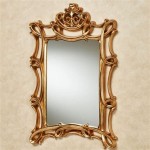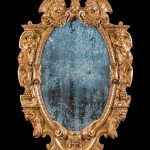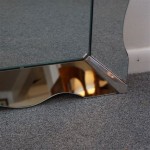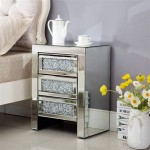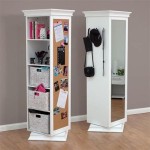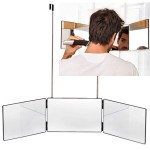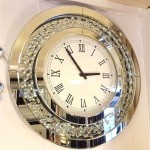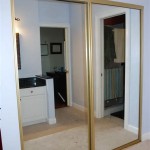How to Stick a Mirror to a Tiled Wall
Attaching a mirror to a tiled wall requires careful planning and execution to ensure a secure and lasting bond. Several factors influence the best method, including the size and weight of the mirror, the type of tiles, and the environment (e.g., bathroom humidity). This guide outlines the most common and effective approaches.
Preparation is Key: Before beginning, gather the necessary tools and materials. These typically include a measuring tape, level, pencil, cleaner suitable for tiles, masking tape, mirror adhesive, and potentially safety equipment like gloves and eye protection. Always consult the adhesive manufacturer’s instructions for specific safety recommendations and application details.
Cleaning the Surface: Thoroughly cleaning the tiled surface is crucial for optimal adhesion. Remove any soap scum, mildew, or grease with a suitable tile cleaner. Rinse the area with clean water and allow it to dry completely. A clean surface ensures the adhesive can bond directly to the tile, maximizing its effectiveness.
Measuring and Marking: Accurate measurement prevents misalignment and ensures the mirror hangs correctly. Measure the dimensions of the mirror and mark the desired position on the tiled wall using a pencil and level. Masking tape can help create straight lines and provide a visual guide during installation. Double-checking measurements is always recommended.
Choosing the Right Adhesive: Selecting the appropriate adhesive is paramount for a successful installation. Consider the weight of the mirror and the environmental conditions. For lighter mirrors, specialized mirror mastic or double-sided mounting tape may suffice. Heavier mirrors necessitate stronger adhesives, such as construction-grade adhesive or liquid nails. In damp environments like bathrooms, using a waterproof and mildew-resistant adhesive is essential.
Applying the Adhesive: Follow the manufacturer's instructions precisely for applying the chosen adhesive. For liquid adhesives, apply a generous amount to the back of the mirror in vertical lines or a zig-zag pattern. This ensures even distribution and prevents air pockets from forming. For mounting tape, apply strips to the back of the mirror, ensuring even spacing for optimal weight distribution.
Mounting the Mirror: Carefully align the mirror with the marked guidelines on the tiled wall. Press the mirror firmly against the tiles, ensuring even contact with the adhesive. Hold the mirror in place for the duration specified by the adhesive manufacturer. Some adhesives may require temporary support until fully cured.
Using Mirror Clips or Supports: For added security, especially with heavier mirrors, consider using mirror clips or supports. These provide extra stability and prevent the mirror from shifting or slipping while the adhesive cures. Mirror clips are typically installed after the mirror is mounted and provide a mechanical anchoring point.
Dealing with Uneven Tiles: Tiled walls, especially older ones, can sometimes be uneven. This can present a challenge when mounting a mirror, potentially leading to gaps and insecure adhesion. In such cases, using spacers or shims behind the mirror can help compensate for the unevenness. These spacers can be small pieces of wood or plastic strategically placed to create a level mounting surface.
Considerations for Large or Heavy Mirrors: Large or heavy mirrors require extra care during installation. It is recommended to have assistance when handling these mirrors to prevent accidents and ensure proper alignment. Using a combination of strong adhesive and mechanical supports, such as J-channels or Z-clips, is advisable for maximum security.
Working with Different Tile Types: Different types of tiles may require specific considerations. Porous tiles, like some ceramic tiles, can absorb adhesive, requiring more generous application. Non-porous tiles, like glass or porcelain, may necessitate specific adhesives designed for these surfaces. Always consult the adhesive manufacturer’s guidelines to ensure compatibility with the specific tile type.
Post-Installation Care: Once the adhesive has fully cured, carefully remove any excess adhesive using a suitable tool. Clean the mirror and surrounding tiles with a glass cleaner. Regular cleaning and maintenance will help preserve the mirror’s appearance and the integrity of the adhesive bond.
Alternative Mounting Methods: While adhesive is the most common method, alternative mounting systems exist. These include using screws and anchors directly into the tiles or utilizing specialized mirror hanging systems designed for tiled surfaces. These methods are generally more complex and require specialized tools, but they can provide a more permanent and secure mounting solution, especially for extremely heavy mirrors.

How To Stick A Mirror Bathroom Tiles Sanctuary Bathrooms

40pcs Self Adhesive Square Glass Mirror Tiles Wall Sticker Home Décor On Onbuy

Pdtoweb 32pcs Mirror Tiles Wall Sticker Square Self Adhesive Stick On Art Decor Joom

Diy Bathroom Decor Ideas Self Adhesive Mirror Wall Tiles Accent Design Para Banheiro De Interiores Azulejo

3d Glass Mirror Tiles Wall Sticker Square Self Adhesive Stick On Diy Decor Us Fashion Home Garden Living Room

4pcs 20x20cm Mirror Tiles Wall Sticker Square Self Adhesive Stick On Home Decor

30x30cm Large Mirror Tiles Wall Sticker Square Self Adhesive Stick On Diy Home

18pack Self Adhesive Acrylic Mirror 8 X Inch Tiles Decor Fra

Americanflat Adhesive Mirror Tiles Art Deco Panorama Design L And Stick Mirrors For Wall Frameless Bedroom Living Room Decor 5pcs Set Com

Adhesive Mirror Tiles L And Stick Mirrors For Wall

